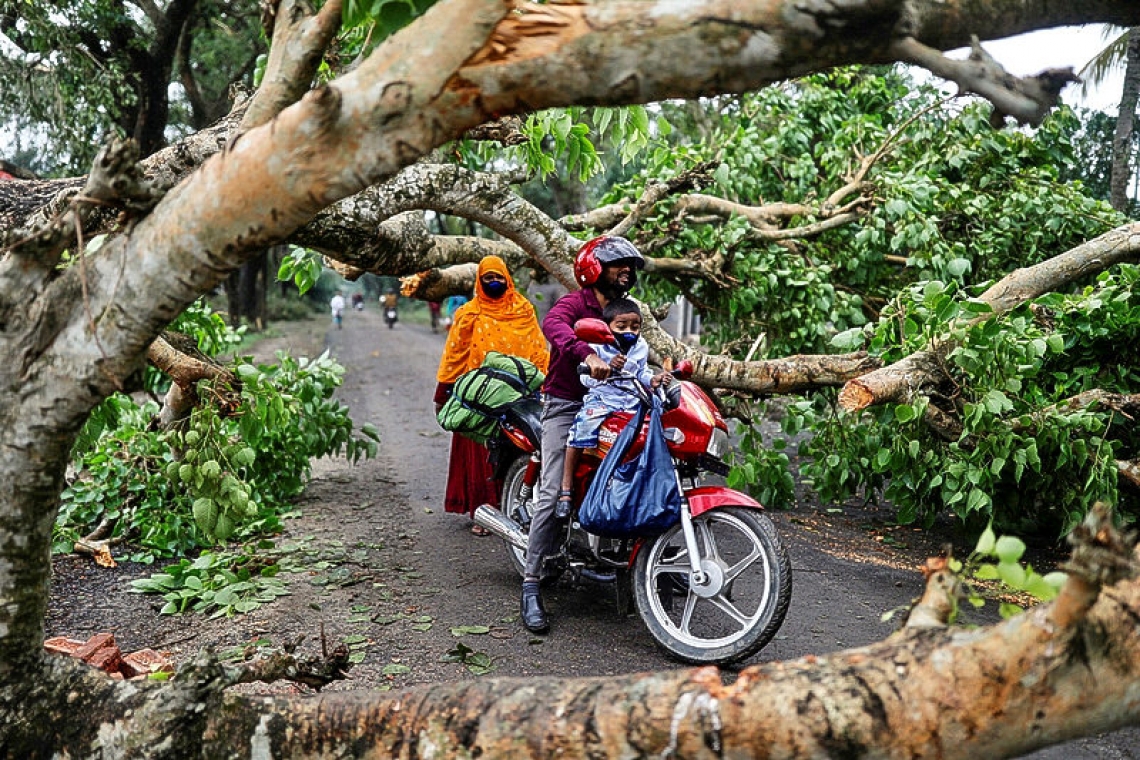KOLKATA/DHAKA--The most powerful cyclone to strike eastern India and Bangladesh in over a decade killed at least 82 people, officials said, as rescue teams scoured devastated coastal villages on Thursday, hampered by torn down power lines and widespread flooding.
Mass evacuations before Cyclone Amphan made landfall undoubtedly saved countless lives, but the full extent of the casualties and damage will only be known once communications are restored, officials said.
In the Indian state of West Bengal, Chief Minister Mamata Banerjee said at least 72 people had perished - most of them either electrocuted or killed by trees uprooted by winds gusting up to 185 km per hour (115 mph).
She said the storm had carved a 400-km long swathe through the state and announced a 10 billion rupee ($130 million) emergency fund to rebuild roads, water and health systems. "These areas have been devastated," she said.
In neighbouring Bangladesh, the initial death toll was put at 10. "I have never seen such a cyclone in my life. It seemed like the end of the world," said Azgar Ali, 49, a resident of Satkhira district on the Bangladeshi coast. "All I could do was to pray ... Almighty Allah saved us."
When the cyclone barrelled in from the Bay of Bengal on Wednesday, a storm surge of around five metres caused flooding across low-lying coastal areas. Reuters' and other television footage showed people wading through knee-deep water and buses that had been smashed into each other.
Villagers could be seen trying to lift fallen electricity poles, fishermen hauling their boats out of a choppy sea, and uprooted trees lying strewn across the countryside. "Have been seeing visuals from West Bengal on the devastation caused by Cyclone Amphan," Indian Prime Minister Narendra Modi tweeted. "In this challenging hour, the entire nation stands in solidarity with West Bengal."
Designated a super cyclone, Amphan weakened after making landfall. Moving inland through Bangladesh, it was downgraded to a cyclonic storm by the Indian weather office, and it was expected to subside into a depression later.
Low-lying Bangladesh has a history of cyclones, but even by those standards Amphan was powerful, said Mostak Hussain, humanitarian director for Save the Children in Bangladesh. "We’ve received reports that more than 5 million people were disconnected from the electricity grid for their own safety as winds of 150 kph smashed into power lines, destroying homes and uprooting trees," he said.
Concern was also growing over flooding in the Sundarbans, an ecologically fragile region straddling the Indian-Bangladesh border, best known for its thick mangrove forests and tiger reserve. "The tidal surge submerged part of the forest," said Belayet Hossain, a forest official on the Bangladeshi side. "We have seen trees uprooted, the tin roofs of the guard towers blown off."







